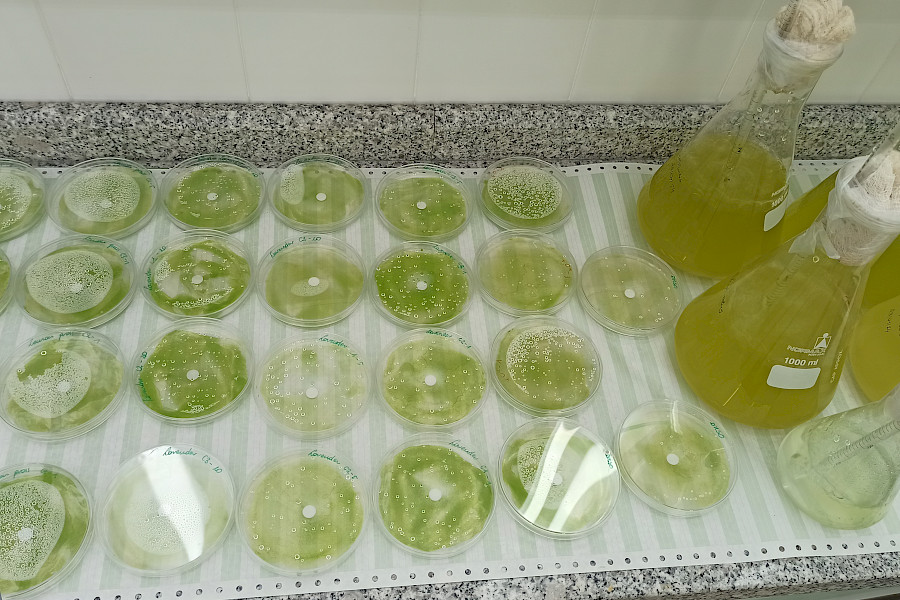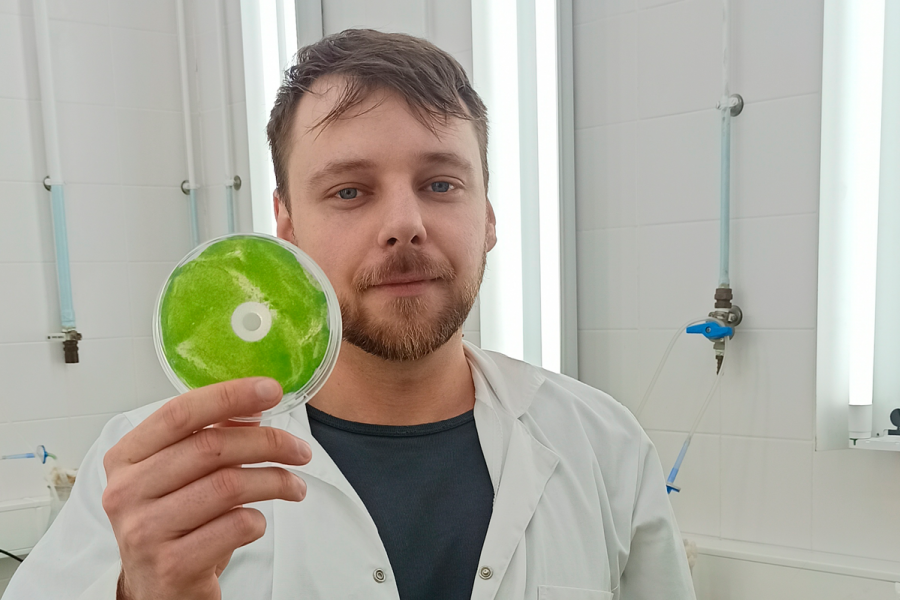Researchers test the use of essential oils to remove and prevent the growth of microalgae in monuments
Seven different compounds - including five essential oils and two pure active ingredients - have already been tested against green biofilm, which consists mainly of terrestrial microalgae.
A group of researchers from the Faculty of Sciences and Technology of the University of Coimbra (FCTUC), in collaboration with Michal Komar, a student at the Lodz University of Technology, is testing the effects of applying different essential oils to eliminate and prevent the growth of terrestrial microalgae, which are often found on the facades of buildings and monuments.
Michal Komar, an Erasmus student at FCTUC's Department of Life Sciences (DCV), has already tested seven different substances—five essential oils and two purely active compounds—to combat green biofilm, consisting mainly of terrestrial microalgae.
The research, entitled "Biodeterioration of building materials by aerophytic algae", "aims to develop methods to prevent the growth of biodeteriorating organisms on the facades of monuments and remove them using ecologically safe substances", explains the student.
Nuno Mesquita, a researcher at the DCV and the Polish student's supervisor during his stay in Coimbra, highlights that terrestrial microalgae pose multifaceted challenges. Not only do they cause aesthetic and structural damage to monuments due to their sometimes endolytic growth, but they also serve as habitats and food sources for other organisms, such as microfungi.
"Algae are primary colonisers, which means that by preventing their growth or eliminating them, we can prevent subsequent colonisations and thus mitigate the deterioration of monuments and buildings," the researcher believes.
As for the methods, Michal Komar explains: "We have carried out various tests using different essential oils on culture plates and samples of materials such as red brick, made up of clay, calcium carbonate and sand. The biofilms formed and treated will undergo an analysis of their metabolomic profile to assess the different responses to these stress factors in terms of the presence and abundance of organic compounds,"
"The results are promising and surprising. Curiously, not all the oils used to prevent the growth of algae are the same as those used to eliminate them. The next step is to repeat these tests directly on different types of stone surfaces," they conclude.


